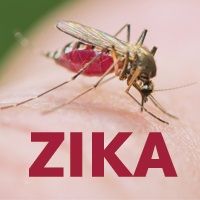Article
Zika Virus: Vision-Threatening Problems Tied to Microcephaly
Author(s):
Not only do children born with microcephaly have smaller-than-normal brain and head size, but the Zika virus-associated condition is suspected to cause ocular problems as well.

Not only do children born with microcephaly have smaller-than-normal brain and head size, but the Zika virus-associated condition is suspected to cause ocular problems as well.
Zika is strongly suspected to cause microcephaly in pregnant women, although it hasn’t been scientifically documented yet. But a spike in microcephaly in children born to mothers with the virus has had officials hard at work combatting the outbreak. Researchers in Brazil found that many of these children with microcephaly also suffer from vision problems.
“This study can help guide clinical management and practice, as we observed that a high proportion of the infants with microcephaly had ophthalmologic lesions,” the team wrote in JAMA Ophthalmology. Although Zika symptoms are typically mild — fever, rash, joint pain, and conjunctivitis (red eyes) – this research indicates that the virus can lead to serious complications.
- MD Magazine is on Facebook, Twitter, Instagram, and LinkedIn!
The researchers looked at 29 mothers and their babies born with microcephaly. All of the children had a head circumference of 32 cm or less. Twenty-three (79.3%) of those mothers reported Zika symptoms while pregnant — most of which occurred in the first trimester. In December 2015, the researchers examined the babies’ eye health and discovered a startling trend.
Ten out of the 29 babies (34.5%) with microcephaly had ocular abnormalities. Out of those 20 eyes, 17 of them (85%) had ophthalmoscopic abnormalities. In addition, seven out of 10 children (70%) had ocular lesions. Eleven out of the 17 eyes with abnormalities (64.7%) had focal pigment mottling and choriorentinal atrophy — which can both result in vision loss. These eye problems are believed to be caused by the Zika virus.
“Based on current information, in our opinion, clinicians in areas where Zika virus is present should perform ophthalmologic examinations on all microcephalic babies,” two physicians advised in a related commentary also in JAMA Ophthalmology. This is especially important in high-transmission areas like South America, Central America, and the Caribbean.
With no preventive vaccine or specific treatment, protection from mosquitos in high-risk areas is the best defense there is against the Zika virus.
Also on MD Magazine >>> Emergency Zika Response Has a $1.8 Billion Price Tag





